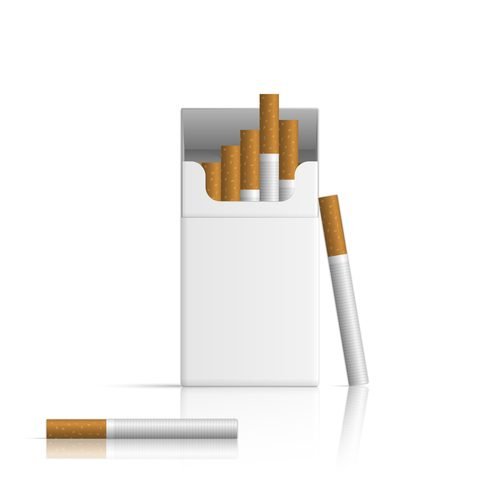The light cigarettes that the tobacco industry markets as healthier have actually increased lung cancer, according to a study.
That’s because the ventilation holes the industry began adding to the filters of light cigarettes 50 years ago produce more carcinogens when the cigarettes are burned, researchers said. The holes also change the way that tobacco is burned, sending more carcinogens deeper in the lungs, the team said.
The ventilation holes are now used in all cigarettes, light or regular.
The research, “Cigarette Filter Ventilation and its Relationship to Increasing Rates of Lung Adenocarcinoma,” was published in the Journal of the National Cancer Institute.
Researchers at the Ohio State University Comprehensive Cancer Center and five other universities or cancer centers conducted the study.
Lung cancer is the leading cause of cancer deaths, and the second most common cancer, in American men and women. Nearly 40 percent of lung cancers in the United States are adenocarcinoma, which usually originates in peripheral lung tissue.
While most cases of adenocarcinoma are associated with smoking, it is also the most common form of lung cancer among people who have smoked fewer than 100 cigarettes in their lifetimes.
Since an increasing number of smokers have kicked the habit, the researchers wanted to know why rates of adenocarcinoma have risen in the past five decades.
Tobacco companies introduced what they dubbed high-ventilation or light cigarettes 50 years ago. They claimed that the holes in the filters made them low-tar products.
“This was done to fool smokers and the public health community into thinking that they actually were safer,” Dr. Peter Shields of the Ohio State cancer program said in a news release. “Our data suggests a clear relationship between the addition of ventilation holes to cigarettes and increasing rates of lung adenocarcinoma seen over the past 20 years. What is especially concerning is that these holes are still added to virtually all cigarettes that are smoked today.”
The study involved researchers comparing clinical trial results with epidemiological, chemistry and toxicology studies of smoking behavior and cancer risk. The key thing the team wanted to know was whether there was a connection between the filter ventilation holes and the higher rates of lung adenocarcinoma.
“The filter ventilation holes change how the tobacco is burned, producing more carcinogens, which then also allows the smoke to reach the deeper parts of the lung where adenocarcinomas more frequently occur,” Shields said.
Although adding ventilation holes to cigarettes has coincided with an increase in lung cancer, the team said studies need to be done on whether eliminating the holes would help. The concern is that getting rid of them would increase addiction to cigarettes and the toxins that cigarettes expose smokers to. The implication is that this could mean even more lung cancer.
The Family Smoking Prevention and Tobacco Control Act, also known as the Tobacco Control Act, became law on June 22, 2009. It gives the U.S. Food and Drug Administration the authority to regulate the manufacture, distribution, and marketing of tobacco products to protect public health.
Under the legislation, tobacco companies are not allowed to label and market cigarettes as light or low tar. The new study prompted the researchers to call for the FDA to regulate the use of ventilation holes.
“The FDA has a public health obligation to take immediate regulatory action to eliminate the use of ventilation holes on cigarettes,” Shields said. “It is a somewhat complicated process to enact such regulations, but there is more than enough data to start the process. We believe that such an action would drive down the use and toxicity of conventional cigarettes, and drive smokers to either quit or use less harmful products. There are some open questions about unintended consequences for enacting a ban, which provides for an important research agenda.”


